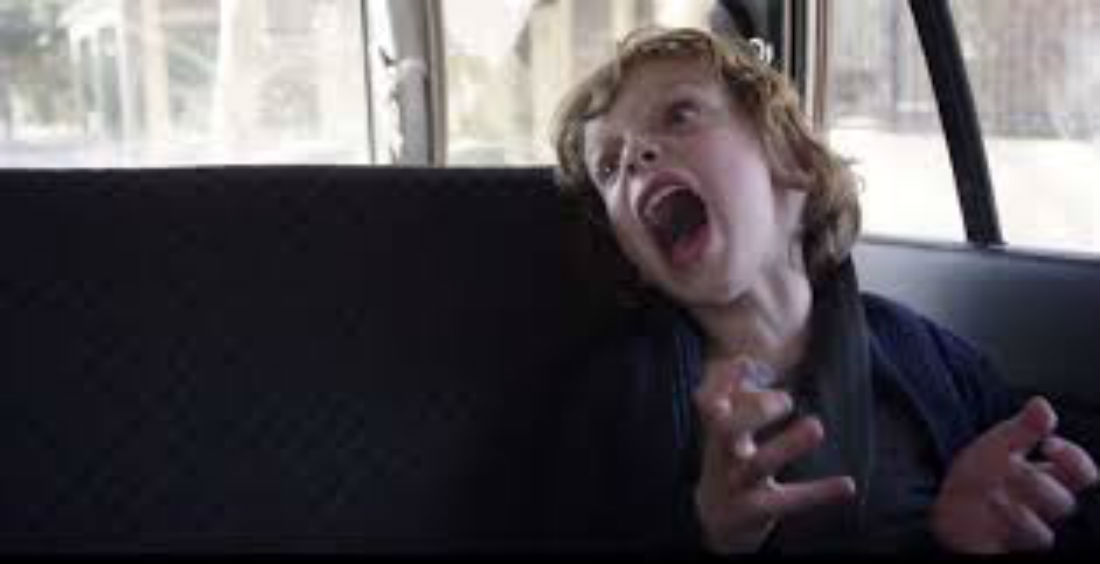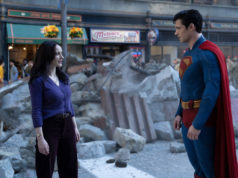Disaster struck at that early screening of Winter Sleep that I mentioned in my last post. The LSFF staff found corruption in the files containing the movie, so it couldn’t be shown. I’m told that the movie will now be screened Sunday at 7pm, but it was a bitter disappointment, especially considering the healthy crowd that showed up for the film. I was impressed; Nuri Bilge Ceylan’s Once Upon a Time in Anatolia played to a nearly empty theater two years ago at the festival. I was looking forward to seeing one of this master’s works with an appreciative audience. Well, maybe I’ll still get that tomorrow.
I wound up at Sometimes I Dream I’m Flying, a documentary following Weronika Frodyma, a Polish ballerina who goes from ballet school in Warsaw to a competition in St. Petersburg to a job in the corps at the Deutsche Oper in Berlin. The thing is beautifully photographed, and director Aneta Popiel-Machnicka is dedicated to avoid the usual documentary tropes of interviews or voiceover narration. Unfortunately, the result is we barely have any sense of who Weronika is. She’s cast in one of the lead roles in the company’s production of Itzak Galili’s The Open Square, but she gets seriously injured in rehearsal and needs surgery. Then she’s back at rehearsal 10 months later, and then the movie ends. We seriously need more context, so this ballet documentary pales beside the likes of First Position and Dancing Across Borders.
Then I saw the Austin-made comedy Arlo and Julie. It feels like one of those Austin jokes that loses its flavor when it gets any further out than Bastrop. Too bad, because there’s a pretty clever underlying premise here: The title couple (Alex Dobrenko and Ashley Spillers) start to receive jigsaw puzzle pieces in the mail from an unknown sender. As they start to put the pieces together, their annoying, nosy friends (Hugo Zesati and Mallory Culbert) notice that the colors in the puzzle look an awful lot like the ones in the abstract painting hanging in Arlo and Julie’s dining room. Oh, by the way, said painting turns out to be worth close to $1 million, although Julie doesn’t want to sell it because it’s a gift from her eccentric aunt. Steve Mims’ script isn’t funny, and the supporting characters are just so much dead weight — I mean, why is that mailman who’s a Civil War buff doing here? It’s a lucky thing that the lead actors are good, and the puzzle plot is involving enough (or I’m fascinated enough by such plots) to keep me around until the end.
I went to see the program of documentary shorts, but because I got the starting time wrong, I wound up missing Robin Berghaus’ Stumped and half of Lauren Cater’s Without Her, a portrait of three lesbian widows that was produced through UNT’s film program. My apologies to those filmmakers. I did see Brian Bolster’s amusing One Year Lease, about his and his gay partner’s tribulations living in a New York apartment, narrated entirely by voice mail messages left by their landlady Rita, who seems to have come from a Central Casting call for a nosy old Jewish New York woman. She keeps telling them they’re mistreating their cat, Casper, who doesn’t look at all neglected. J. Christian Jensen’s White Earth shares its name with a town in North Dakota where an oil boom has brought lots of new people in. The film is mostly narrated by the town’s children, native and new, as they see what the oil industry is doing. It’s a vivid impression that covers quite a bit of ground for its short running time. Matthew VanDyke’s Not Anymore profiles two freedom fighters in the ruined city of Aleppo, Syria, trying to overthrow Bashar al-Assad’s murderous regime. The 24-year-old war photographer Nour Kelze is a presence worth rooting for, though nothing is so powerful as the moment when VanDyke’s camera films a little girl singing a revolutionary song when a grenade explodes nearby. VanDyke is the subject of Marshall Curry’s feature-length documentary Point and Shoot, which reportedly casts him in an unflattering light, though VanDyke promotes the movie on his own website, so he must be pleased with the way he comes off. Last came Harastølen, which takes its name from that of an estate outside of Bergen, Norway that has stood for more than 100 years, serving by turns as a tuberculosis sanitarium, a mental hospital, and a temporary living quarters for Bosnian war refugees. The film is beautifully photographed, and the testaments by people who knew the facility in each of its incarnations is interesting in itself, even if it doesn’t quite add up to a convincing whole.
After dinner came two scary movies. It Follows is the cleverest horror flick I’ve seen since The Cabin in the Woods. Maika Monroe plays a college girl named Jay whose date with a new guy (Jake Weary) goes very bad when he gives her to an entity he calls “It.” It takes the form of various people, sometimes changing shape when it turns a corner. By having sex with Jay, the guy passes It along to her, telling her that It will keep stalking her until It kills her, but she can get rid of It by having sex with someone else. Only Jay can see It, so when she tells her friends that there’s an old woman walking slowly across campus coming for her, they think she’s just traumatized from her quasi-rape experience with the guy. There’s a nifty shot with the camera mounted to the wheelchair where the guy has Jay tied up, but mostly the movie gets its juice from the shape-changing monster, which moves with the slow relentlessness of a zombie. The characters have smartphones, but director David Robert Mitchell films this like a 1970s horror movie, with tree-lined suburban streets, period cars, and a synth-heavy score by Disasterpeace. It Follows is getting a wide release next March, and I highly recommend you see it when that happens.
Still, it’s not as harrowing as the Australian flick The Babadook. Essie Davis plays a widowed mother named Amelia whose 6-year-old son Sam (Noah Wiseman) sees monsters in their house and makes weapons out of household objects to protect himself from them. The kid would be a handful for two parents, prone to screaming tantrums and violence, including a shocking act directed at a cousin who taunts him for not having a dad. Then Sam finds a mysterious picture book in the house called Mister Babadook, whose black-and-white pop-up illustrations make it the most terrifying children’s book I’ve ever read. No wonder Sam bursts into hysterical tears at it. Sam becomes obsessed with the monster from the book, and when Amelia loses her composure at Sam (“Why can’t you be normal?”), he looks away and starts screaming at empty space, begging the Babadook to go away. Then he goes into convulsions. You want terror? How about some of that? Not only does this movie get into fears of having a severely disturbed child, but also of having a severely disturbed parent, as Amelia starts to lose her grip on reality trying to keep Sam under control and the movie turns into a hybrid of The Shining and The Others. The scariest part of this movie is undoubtedly Davis’ performance, as we start to suspect that the Babadook may just be the monster rampaging through her grieving, sleep-deprived head. The movie is the brainchild of writer-director Jennifer Kent, and it will haunt your nightmares.
Speaking of nightmares, that’s what my schedule looks like for the last day of the festival. I may have to make some hard choices.












